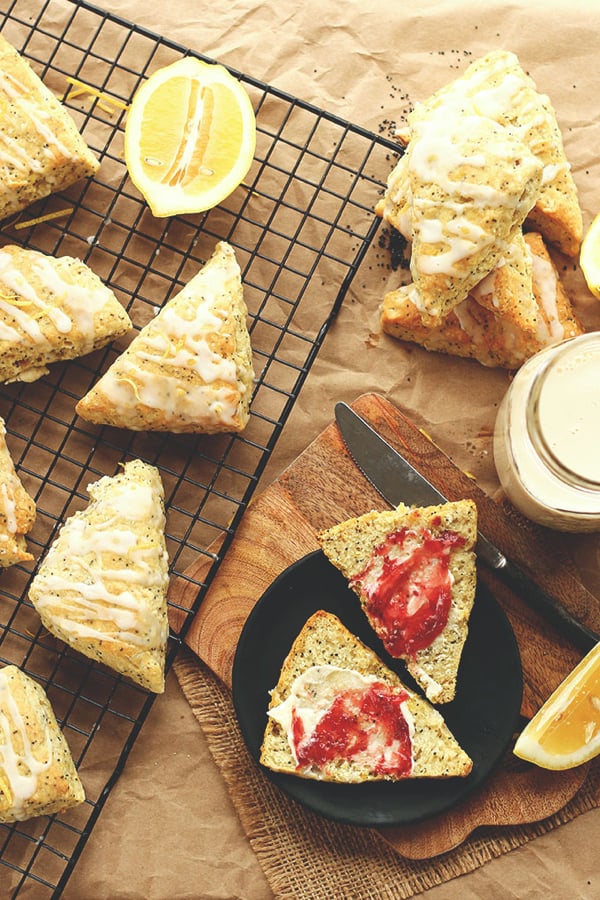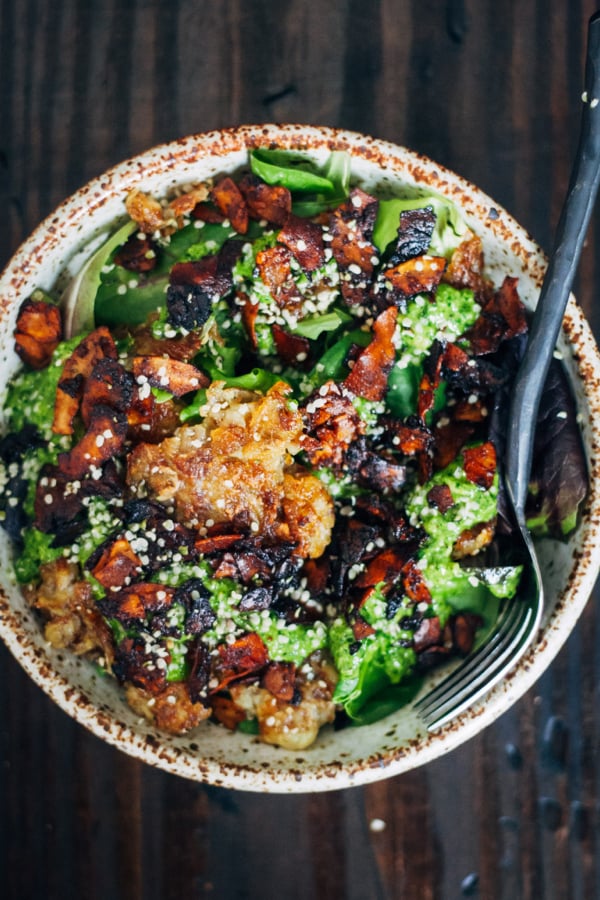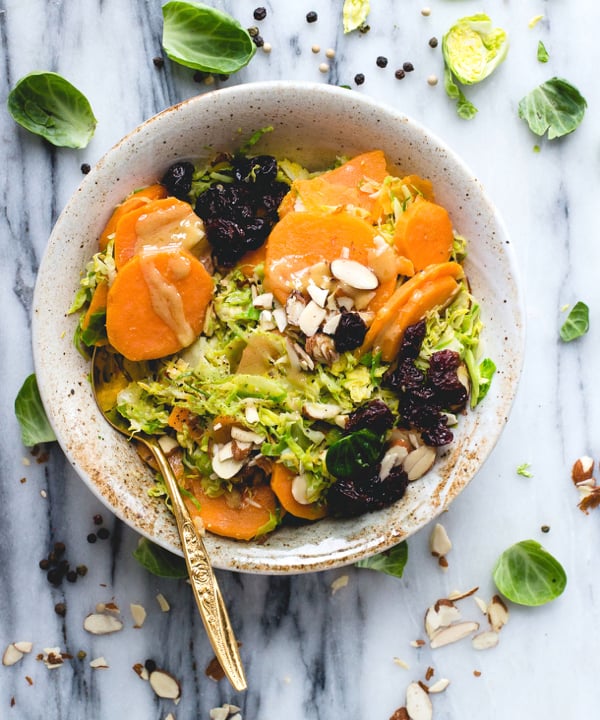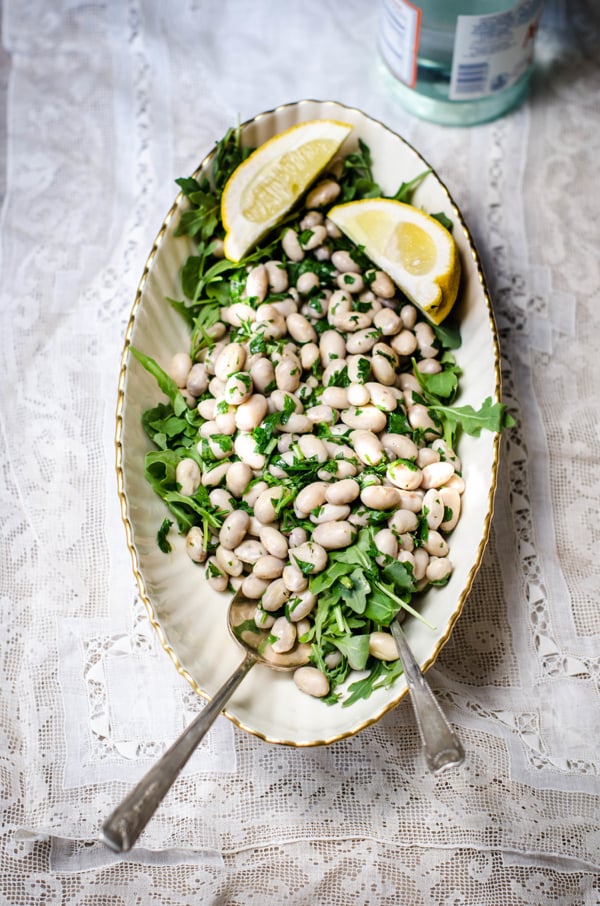Happy Sunday, folks. Thank you for all of the kind words and feedback during NEDA week. It’s always a pleasure to write those posts and to hear your insights.
This week will have a new and different theme: I’ll be completing the SNAP food challenge. This is an assignment for my Community Nutrition class, and the purpose is to shed some light on what it feels like to live with food insecurity.
I spoke more about the challenge in this post, but the bottom line is that Steven and I have about $80 (our bill came to $75.62) to spend for all meals, beverages, and snacks for the week. Once we’ve made our purchases, we can’t pick up any additional food from grocers, delis, coffee shops, restaurants, or other eateries. We can use oil, vinegar, and dry spices that we already own, but aside from that, everything we eat has to be from the $80 maximum that we spent at a SNAP-eligible grocery store–in other words, no pulling ingredients from the pantry.
I’ve done my grocery run and have most of our meals mapped out, and I look forward to sharing more about the experience tomorrow and throughout the week. If anyone is interested in joining me on the challenge, let me know; it would be great to have some additional perspective here on the blog. I also welcome anyone who has lived with food insecurity or received nutrition aid to share thoughts and reflections through the comments section.
For now, my favorite recipes and reads from the past week.
Recipes
A sweet breakfast to start. These vegan lemon poppyseed scones look absolutely perfect! I’m always impressed when someone can get scone texture just right, and Brittany and William have nailed it.
First the sweet, now the savory: Sarah’s green peso breakfast bowl is the kind of morning meal I’d swoon over–so flavorful and hearty. I’ve got it bookmarked!
Amanda’s warm sweet potato salad features simple ingredients–sweet potatoes, almonds, brussels sprouts, cranberry, an easy vinaigrette–but the sum total is a dish that looks vibrant, flavorful and full of texture. A perfect wintertime salad.
Proof that the simplest combination of ingredients can be beautiful, this herbed white bean salad with arugula is ideal for a quick, simple lunch.
Brianne’s vegan chili fries with avocado cream will satisfy your craving for vegan comfort food, but with some super wholesome ingredients. Perfect for those of you who plan to have friends over for Oscar viewing tonight.
Reads
1. To begin, I really loved Cadry’s thoughtful-yet-no-nonsense perspective on the idea of “temptation” as a vegan.
Cadry begins by relaying some questions/comments that she sometimes hears from friends or acquaintances, including “you don’t know what you’re missing,” “I could never do that,” or “but don’t you ever feel tempted to cheat?” I think all vegans have heard these remarks at some point or another, and if you’ve ever struggled to find a response, you’ll appreciate Cadry’s insights.
For what it’s worth, I share Cadry’s bafflement with the idea of “cheating”–as though veganism has me under lock and key. I’ve embraced this lifestyle consciously, and I don’t feel a sense of friction or deprivation that would propel me to “cheat.” Of course I missed some non-vegan foods at first, and occasionally I still do, but that’s what creative, interpretive cooking (and cool vegan products!) are for.
Dietary change is hard, and the transition to veganism can be emotionally complex. It can take a long time to feel as though the lifestyle is second nature. But the assumption that all vegans are secretly lusting after animal foods feels like an underestimation of the conviction, thoughtfulness, and freedom of choice that so many of us associate with being vegan.
2. The images from photographer Henry Horenstein’s “Animalia” series featured zoo animals who are pictured not behind bars–as we human beings see them all the time–but free, and in remarkable detail.
“I choose to look closely and abstractly—to see my subjects for their inherent beauty, oddness, mystery,” writes Horenstein in a statement. “For this, I shot often with macro lenses, so I could get close, and worked with grainy, black-and-white films, printed in sepia, hoping to give them an old school, timeless feel.”
The images are beautiful. I have to admit that I started to cry when I saw the image you see of the pig above. The photograph captures such nobility and so much soul, but I couldn’t help but think about the millions of pigs who spend their life in cruel and captive conditions when I saw it. I feel grateful to photography like this for helping to capture animals’ selfhood. We turn a blind eye to this selfhood when we commodify animals for consumption as food, but the images can bring it undeniably and unforgettably to life.
3. More news on the microbiome: new research suggests that diminished gut microbiota may actually contribute to malnutrition and stunt growth. The research also suggests that replenishment of gut flora can help to aid in proper growth and development, which has promise for treatment in undernourished kids.
4. Troubling national health news: the life span gap between rich and poor is growing in America. In the early 1970s, a 60-year-old man in the top half of the earnings ladder could expect to live 1.2 years longer than a man of the same age in the bottom half, according to an analysis by the. In 2001, and he could expect to live 5.8 years longer than his poorer counterpart.
The latest research reveals an even wider and more troubling gap. According to the New York Times article, economists at the Brookings Institution found that for men born in 1920, there was a six-year difference in life expectancy between the top 10 percent of earners and the bottom 10 percent. For men born in 1950, that difference had more than doubled, to 14 years. For women, the gap grew to 13 years, from 4.7 years.
Smoking is posited to be a major source of the difference, but other potential factors include obesity, prescription drug use in low-income white communities, and unequal access to health care. Yet economic and social inequality is likely the true source of this disparity, and according to one of the public health experts interviewed for the article, “those are things that high-tech medicine cannot fix.”
5. Also on the topic of income disparity/poverty, I loved Caitlin Daniels’ New York Times op-ed on the hidden cost of childhood picky eating for poor families (thanks to Sarah for bringing the article to my attention).
Daniels’ main point is that, for a mother on food stamps, food is so precious and has to stretch so far that encouraging a child to taste new, healthful ingredients (knowing full well that the child may reject them) feels like an unaffordable risk. Parents with financial security can afford to coax kids out of their pickiness by continually exposing them to new foods and flavors, but poor parents revert to what’s safe, which is often an array of non-nutritive foods.
This feels like an important insight, one that cuts through the tendency to place blame for poor childhood nutrition on the shoulder of individual parents, many of whom are simply struggling to survive. Getting kids to eat new foods is hard even in the most privileged of circumstances. Babies and kids have a natural predisposition for sweet and fatty foods, as well as an aversion for bitter ones (including many vegetables). They can outgrow these tastes when given enough exposure, but parents who are on an extremely limited food budget simply may not have the resources to keep trying. According to Daniels, support for parents should come in the form of a less obesogenic food landscape, especially in low income communities, and better nutrition education programs in schools.
And that’s an appropriate note to end on as the SNAP challenge week begins. I’ll see you all tomorrow for Menu Plan Monday, and I wish you a great Sunday.
xo
You might also like
Two weeks ago, right after my summer courses ended, I spent some time getting to know Prague. It was a trip I had committed to this spring, fresh on the heels of my breakup. I was eager for an escape, but it wasn’t just about that. I was also thinking about how I’ve delayed seeing more of the world for a long time now. My reasoning seemed sensible: I’d think about the cost of travel, the things I needed to do here at…
Happy Sunday! I hope everyone has had a nice weekend so far. Mine involves a combination of work, study, and play — work for clients, studying in the form of my first few forays into preparing for final exams, and play in the form of getting my Christmas tree up. The arrival of a tree always seems to make the holiday season feel real, and I’m so happy to have it. As you’ll see tomorrow and on Tuesday, there have been plenty of fragrant…
It feels so strange to be typing “2015” as a part of these posts! How time flies. I hope that everyone has enjoyed this first weekend of the new year. I’m back from Vieques, and while I miss it, I can’t say I’m not happy to be immersed in a cityscape again. It’s also a joy to be reunited with my kitchen. Like many folks, I love to mix up and invigorate my culinary routine in January, and the following recipes have inspired me already….
Oftentimes when I read about the importance of saying no and setting boundaries, the advice seems to assume that the things being declined aren’t all that desirable: unmanageable amounts of work, exhausting social commitments, and so on. This week, I learned how hard it is to turn down things that might be very enjoyable, but yet feel like too much. As soon as I was on the mend, I wanted so badly to connect with friends, get back to work, and feel more…







Leave a Comment
Have tried the SNAP Challenge before. It’s difficult but not impossible. You have some good suggestions :). I’m grateful I don’t have to plan and worry like that every day, though. I grow a giant garden every year … 1/3 of an acre, and donate about half of it to local food pantries. When people “run out of food before they run out of month,” food pantries can be literal life savers. Something to keep in mind when you have extra produce 🙂
Very interesting read! I hadn’t heard of the SNAP challenge before. Looking forward to your next posts on how this goes.
One of my favorite roundups ever! Except I miss dessert since the beau has started baking recently. *swoons*
I was on food stamps during my job hunting days after grad school – but I was also still heavily couponing and used them at Whole Foods. In Baltimore, I could get a full week’s worth of food from WF on <$40/week! The beau and I still try to stick to that budget now even though we're in a better place financially partially because we know it's possible and partially because we eat out more now and would quite frankly prefer to save the money for a fancy dinner.
Switching gears a bit to the lifespan gap, I can't say I'm surprised. Particularly here in NYC the difference in healthcare for folks with private insurance versus state-sponsored is quite frankly fucking disgusting. Since moving here two years ago, I've been on 6 different insurance plans including COBRA, private hospital insurance, Medicaid, and different Obamacare plans. I've had the most amazing healthcare (swanky, spa-like offices, appointments even super last minute, extensive testing, etc)…and the absolute worst (2+ hour wait times, months-long waits for appointments, outdated equipment, etc). I know how to work the system because of the time spent working in clinics but even that hasn't helped in some cases. I feel guilty that I go downtown for all of my care, but my few experiences in Harlem have been really awful…which again reflects how shitty it is for someone who doesn't have the privilege to spend parts of their day travelling for appointments.
Maybe this was right in front of my face but I just didn’t see it, but how did you know what your budget was for the SNAP challenge? I searched the site but didn’t see any sort of formula listed. I don’t want to assume that my household of two would have the same budget as yours because the city I live in is far less expensive than NYC.
Hi Caitlin,
Our professor did the calculation and rounded up to $80 (if I recall correctly from lecture it’s closer to something in the mid-high seventies, which is part of why I’m glad we stuck to $75 for our home).
On average for the whole country, the weekly budget would appear to be $63 for a two-person home (I used the average estimates on this page to get that figure: http://www.cbpp.org/research/a-quick-guide-to-snap-eligibility-and-benefits). For a three person home, it’s $93.5, and for a single person home, $35.75. With each additional household member the average increase in monthly expenditure is $146. I hope this helps! I’m trying to find a guide to allocation by day for each state (it was in our lecture slide) but can’t seem to at the moment — I can ask my professor if you’d like a precise calculation. I do know that most snap challenges allot between $30-$35 dollars per week.
G
Can’t wait to check out the last article- I’ve spent a lot of time working with low-income kids and families in the D.C. area and have thought about this A LOT. It’s one reason I am so passionate about community nutrition programs that focus on disadvantaged groups. How can we begin to level the playing field? It’s why I went back to school for nutrition 4 years ago and after a long and winding road I’ll finally be an R.D. in a few short months. AND I’ve got a big interview next week for a job where I’d be trying to improve exactly these types of issues- eek! I still can’t believe I’m finally, FINALLY almost there!
I actually started the SNAP challenge myself on Thursday (we are all completing it as part of my dietetic internship) – I’ll be interested to hear how it goes for you. I found I was able to work coffee into my budget (!!!!) and even though my spinach isn’t organic and there aren’t any chia seeds in my oatmeal (gasp!) as long as I can deal with a bit of monotony it hasn’t been too bad for me personally. Eating vegan food definitely helps, but otherwise I have a lot of thoughts on why that is: I’ve got math skills, budgeting skills, no children, no extensive chronic health conditions, extra time on my hands, nutrition knowledge, pretty extensive cooking skills…. so many resources that many families on SNAP lack. And while I can deal with it, there’s no comparison between choosing to stick to the plan with an end in sight vs. having no option – that’s something the challenge can never mimic for someone like myself and I recognize that. I’ve also been thinking a lot about how powerless it must make people feel to not be able to have the things they want when they want them, things I take for granted sometimes (chocolate after dinner, midday tea as a pick-me-up….). Anyway I’ll be very interested to read about your experience, Gena!
Oh wow, good luck Amy! This is such vital work, and I know you’ll make really meaningful contributions. Congrats on being so close to the finish line — you’ve worked hard for it, I know.
As for the SNAP challenge, I also managed to get coffee (yup, it was a priority), and while I think it’ll definitely be more limited in variety than what I’m used to, I don’t suspect that it will be too rough. I think the fact that we’re vegan will help a lot (what my classmates who’ve already done it seem to have struggled with most was adjusting the amount of animal protein in their diets), as well everything else you listed: good budgeting, planning, no children, no chronic health conditions to take into account, and the fact that I’m used to cooking under time constraints. I look forward to sharing more, and I welcome you to comment! I’ll be addressing it specifically tomorrow and next weekend, and I’ll be sharing two recipes during the week ahead.